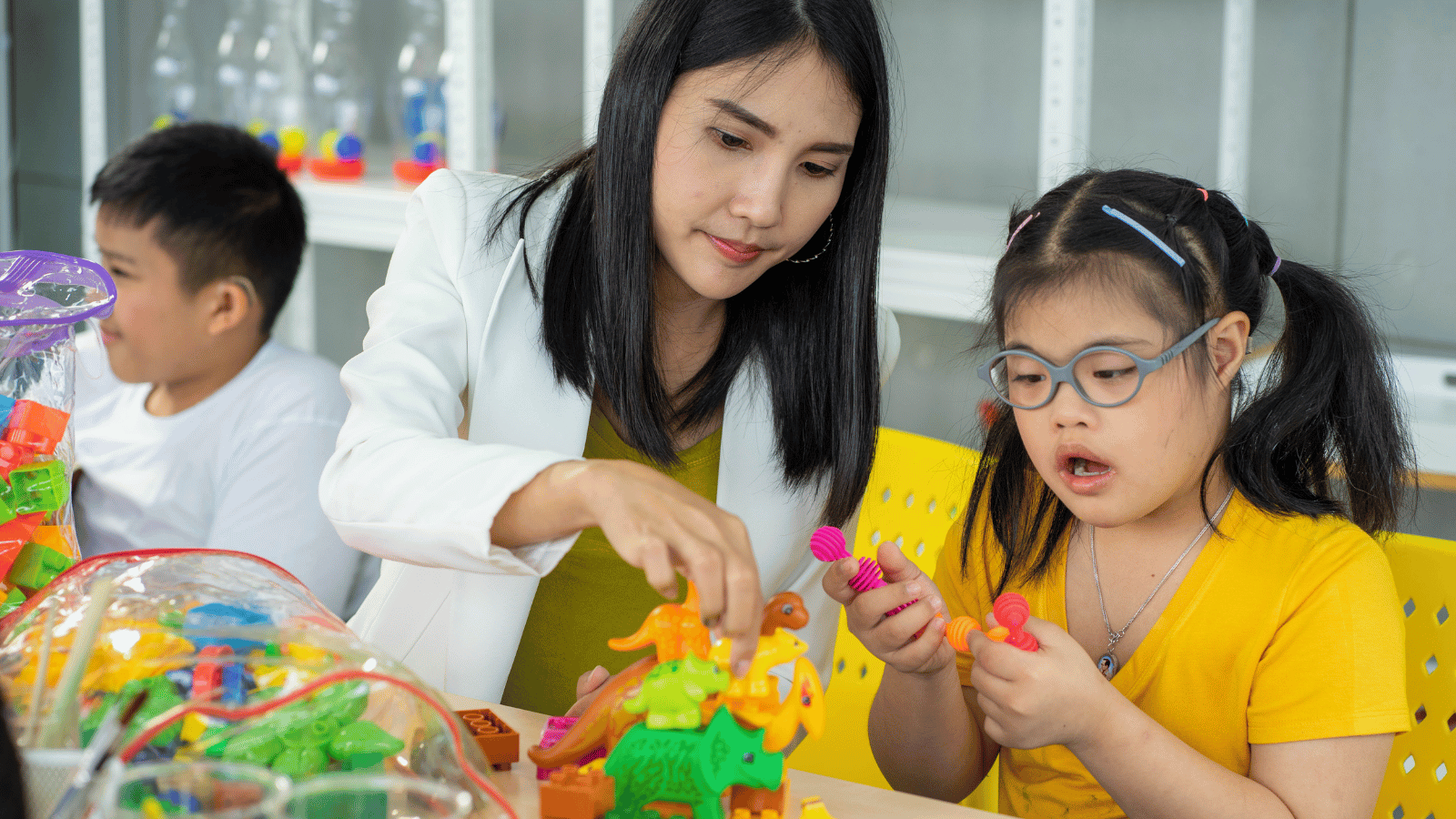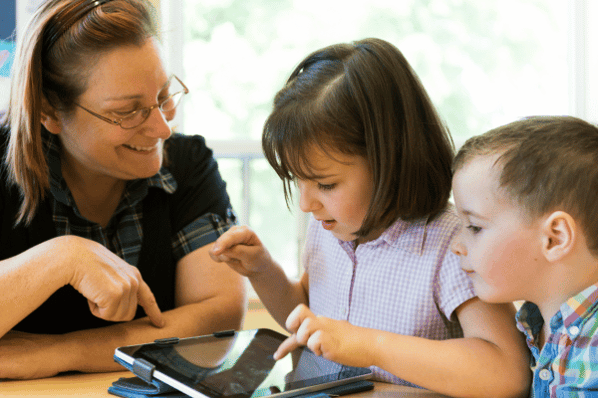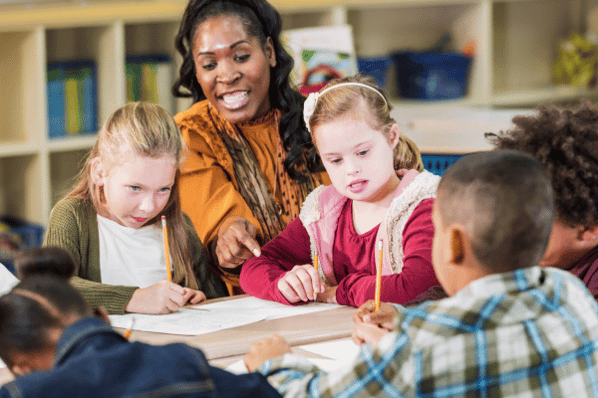
It’s a common belief that children with disabilities can’t learn effectively in regular education programs. However, a least restrictive environment (LRE) allows them to participate in mainstream school instruction and activities.
Children with disabilities can reach their academic goals with the help of supplementary aids like assistive technology, special education teachers, and individual classroom aids, depending on the unique needs of each child.
This article explains what a least restrictive environment is, why it’s essential, and how you can use it to create inclusive classrooms for children with and without disabilities.
What is a least restrictive environment (LRE)?
Least restrictive environment (LRE) is a component of the Individuals with Disabilities Education Act (IDEA), a federal special education law granting children with disabilities in the U.S. equal access to education. LRE means children with disabilities should learn in the same classrooms as children without disabilities. The word “environment” doesn’t necessarily refer to a physical place but to the child’s education resources and services.
IDEA mandates that children with disabilities (in public or private school settings) should receive education with children who aren’t disabled to the “maximum extent appropriate.” IDEA’s mandate further discusses that special classes, separate schooling, or removing children with disabilities from regular education should only happen when the child’s disability is severe enough to the extent that it doesn’t allow satisfactory learning in the general education environment, even with the help of supplementary aids.
Note that a least restrictive environment should be appropriate for the child’s individual needs because each child is unique. An Individualized Education Program (IEP) is a legal document that determines the right LRE for a child with learning disabilities. The document lays out a plan for the support, special education instruction, and services the child will need to succeed in school. An effective IEP requires the input of a team, including the child’s parents, special education teacher, regular education teacher, school system representative, and the child, if appropriate. Sometimes, you might realize that learning in a general education classroom isn’t the best idea for some children, and the IEP must clearly indicate why.
Use brightwheel to streamline your record keeping process and securely access all your childcare records digitally, including IEPs. Create custom form templates to capture required information and organize records digitally in each student's profile for easy access and compliance.
Why is a least restrictive environment important?
When children with disabilities receive instruction in a general education setting that also meets their specific needs, it enriches their learning experience. Here’s why a least restrictive environment is so important:
Improved academic progress
Children with mild and severe disabilities experience academic improvement when they move from special education to inclusive settings. Children perform better in reading, vocabulary, and language and engage more in the classroom. Some teachers worry that students with disabilities might cause disruptions that affect other learners. However, research has found that non-disabled students also experience improved academic performance in an inclusive setting.
Increases acceptance and understanding
The importance of LRE goes beyond the school curriculum. Interactions between children with disabilities and those without can help reduce fear, prejudice, and discrimination.
By being exposed to different abilities and ways of learning, children without disabilities can develop improved attitudes and acceptance of their peers with disabilities. In addition, teachers are able to promote values of inclusion and diversity in preschool and start conversations around fairness and equity for everyone.
Customized instruction
Children struggling with particular subjects and activities like math, reading, and spelling can receive specialized instruction with supplementary aids or a special education teacher during the school day. This focused attention helps children meet their goals with that specific activity without missing the general instruction and interaction.
How to create an inclusive environment in the classroom
Accommodations and modifications will help children with disabilities learn the same content as their peers but in ways that best suit their abilities. Accommodations remove barriers to children’s learning by changing how they learn and do their work. For example, you might give a child extra time to finish an assignment. Modifications involve changing what the child learns; for instance, while the class is learning spelling and vocabulary, the child might learn specific words.
Here are accommodations you can use to create an inclusive classroom environment:
Presentation accommodations
Presentation accommodations change how you present information to children. Children with disabilities can access the same content but in a different format from their peers. Some children may have difficulty using instructional materials like regular handouts and books. Presentation accommodations can include listening to audio recordings, watching videos, reading texts with larger print sizes, or using visual presentations. Other presentation accommodations include working with fewer items per page, having someone read test questions or instructions out loud, or getting a list of instructions in writing.
Setting accommodations
An inclusive classroom should provide a conducive setting that supports all children’s learning. Examples of setting accommodations include seating a child at the front of the class where there are fewer distractions, using sensory tools like stress balls for fidgety children, taking a test in a quiet room or small group setting, and using acoustics and special lighting.
Response accommodations
Response accommodations change the way children complete tests and assignments. For example, children can give responses in a format that’s easier for them (either spoken or written) or capture responses via computer or a tape recorder.
Scheduling accommodations
If a child has trouble processing information or staying focused, they need scheduling accommodations to help reduce frustration and fatigue. Examples include taking a test at a specified time of the day or in many timed sessions over a couple of days, taking a test in a different order, or allowing more time to complete a project.
Timing accommodations
Timing accommodations help children who find it difficult to finish assignments on time. Examples include taking frequent breaks after completing a task, having extra time to complete a test or worksheet, more time to process verbal directions and information, and using a checklist to complete assignments.
Organization skills accommodations
Help children keep track of assignments and other tasks with organization skills accommodations like using a planner to organize projects, using an alarm for time management, cues like hand signals to keep children on task, and marking workbook texts with a highlighter.
Now let’s look at some modification examples:
Curriculum modifications
Helping children learn effectively might require changing the academic content, instruction, and learning material. Examples include using a different assessment or grading standard from their peers, excusing children from specific projects, and teaching them different material.
Assignment modifications
Assignment modifications can include creating different tasks or projects for children to complete or giving them different homework or test questions than their peers.
Other ways to create an inclusive environment include:- Using homework books that families and teachers sign off daily
- Frequent eye contact with the child
- A daily check-in with the child after class to review the day
- Reviewing the child’s IEP annually to ensure their needs are being met
- Collaborating with the special education teacher to set up your classroom and considering co-teaching
An inclusive classroom environment will make children with disabilities feel comfortable and excited to learn.
Least restrictive environment examples
Common LRE scenarios include:
General education classroom with support
A child receives instruction in a general education classroom with necessary accommodations or modifications and support like assistive technology, specialized materials, instructional methods, and other equipment. For example, a child with a hearing impairment gets preferential seating and uses visual aids and possibly hearing assistance technology.
Partial mainstream/inclusion classroom
The general education teacher collaborates with the special education teacher to plan and teach. A child mainly receives instruction from the general education teacher with necessary accommodations or modifications. The child also receives individualized or small group instruction from the special education teacher. For example, children with a learning disability spend the day in the general education class. However, the special education teacher comes to the general education classroom during the reading exercise to help those children work through their reading challenges.
Special education class
A child spends part of the day in a special education classroom, also known as a resource room, receiving individualized or small-group instruction. The general education and special needs teachers collaborate to plan and provide instruction accordingly. Most learning happens in the general education classroom with the necessary accommodations and modifications. For example, a child with a learning disability spends most of their day in the general classroom. However, they go to the resource room for specialized math learning from the special education teacher for an hour each day.
Specialized program
Children spend their day in a specialized private or public facility with specific resources and staff to care for and educate them. For example, a deaf child’s IEP team might determine that they will achieve academic success in a school for the deaf as opposed to an inclusive program.
Inclusive early learning is possible
Creating an inclusive learning environment for children with disabilities isn’t easy, but it's possible. Developing an effective IEP according to each child’s needs and using necessary accommodations and modifications will place them in the appropriate least restrictive environment scenario and help them reach their full potential.
Brightwheel is the complete solution for early education providers, enabling you to streamline your center’s operations and build a stand-out reputation. Brightwheel connects the most critical aspects of running your center—including sign in and out, parent communications, tuition billing, and licensing and compliance—in one easy-to-use tool, along with providing best-in-class customer support and coaching. Brightwheel is trusted by thousands of early education centers and millions of parents. Learn more at mybrightwheel.com.
-png.png?width=598&height=399&name=least-restrictive-environment-1%20(1)-png.png)



